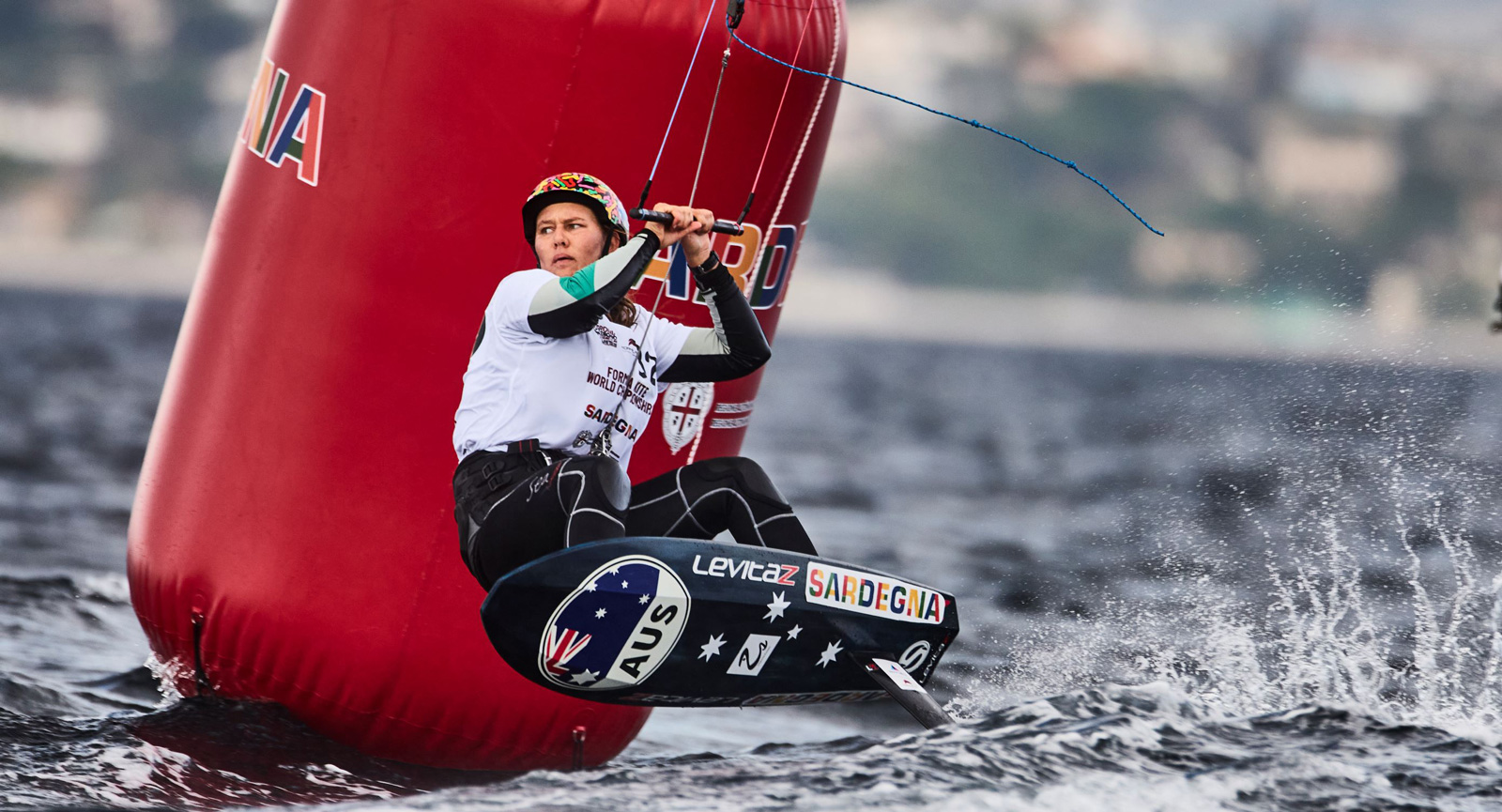
It’s a long way from Townsville City, Australia to the 2024 Olympic Games in Paris, France. Australian Olympic kite-foiler, Breiana Whitehead is relying on a collaboration with ATL Composites and WEST SYSTEM Epoxy to give her the winning edge in July 2024.
She is working with her dad, Murray, and the team at ATL Composites perfecting the design and construction of the boards that will give her an advantage on the waters of Marseille, France.
The First Kite-Foil Sailor to be Selected for an Australian Olympic Team
Breiana has the distinction of being the first kite-foil sailor to be selected for an Australian Olympic Team and the first sailor officially selected for the Paris 2024 Australian Olympic Team.
She has a good understanding of, and a strong interest in, composites. She’s had a lot of hands-on experience repairing her own gear over the years, is a qualified Mechanical Engineer, and has been involved in every step of the board-building process: shaping, cutting, using the router, making changes to the CAD drawings, and testing the boards along the way.
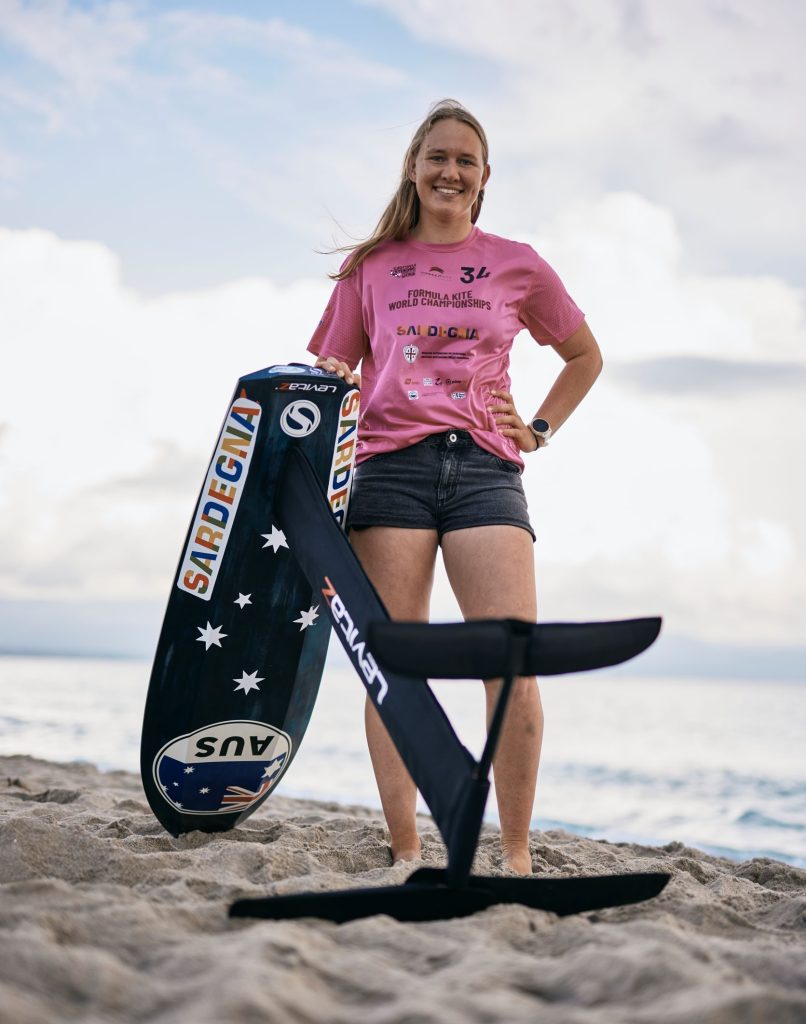
To Breiana, the board and board design is an extremely important ingredient to racing well. She explains, “The board affects how the body connects to the foil, how much force I can push through the foil, and therefore the speed I can get out of it when racing.”
Both Breiana and her brother, Scott, have Australian and International titles to their names. Both are forces to be reckoned with in the extreme sport of kite-foiling.
Kite-Foil: A New Olympic Class
Kite-foil is a new Olympic class making its debut at Paris 2024. In this sport, kite-foil sailors can reach speed in excess of 38 knots (44 mph/70 km kph) as they maintain their balance and manage racing tactics, competitors’ lines, kites, and the challenges of waves and wind.
The 23-year-old athlete has just competed in Sail Melbourne and Sail Sydney, before returning to Europe for more training and regattas pre-Olympics in Marseille.
Murray Whitehead, a boat builder by trade, has always been in and around water. He says that both Breiana and Scott “were involved in sailing from a young age. I built a 45-foot Adams/Radford yacht launched when Breiana was about two-and-a-half, and as a family we cruised the Great Barrier Reef, the islands, including Papua New Guinea.
“Both the kids have enormous on water experience which led to sailing little dinghies, then racing Sabots, Flying 11s, 29ers, Lasers at an Australian level – so they have a solid background.”
“The F1 of Sailing”
“But all these sailing experiences pale in significance compared to the excitement and speed of kite-foiling,” Murray attests. He describes kite-foiling as “the F1 of sailing”.
“It’s a relatively new sport. The most common form of kiting is twin tip riding largely reaching in the shallows or waves, but for racing it’s with a foil in the water and ram air style kites of spinnaker cloth style material that can achieve great angles to the wind and incredible speed, in order of up to four times windspeed,” Murry explains.
Originally popularized in San Francisco, kite-foil racing gradually developed. Then carbon foils changed the game to go faster and racing took off around the world.
The Evolving Sport of Kite Foiling
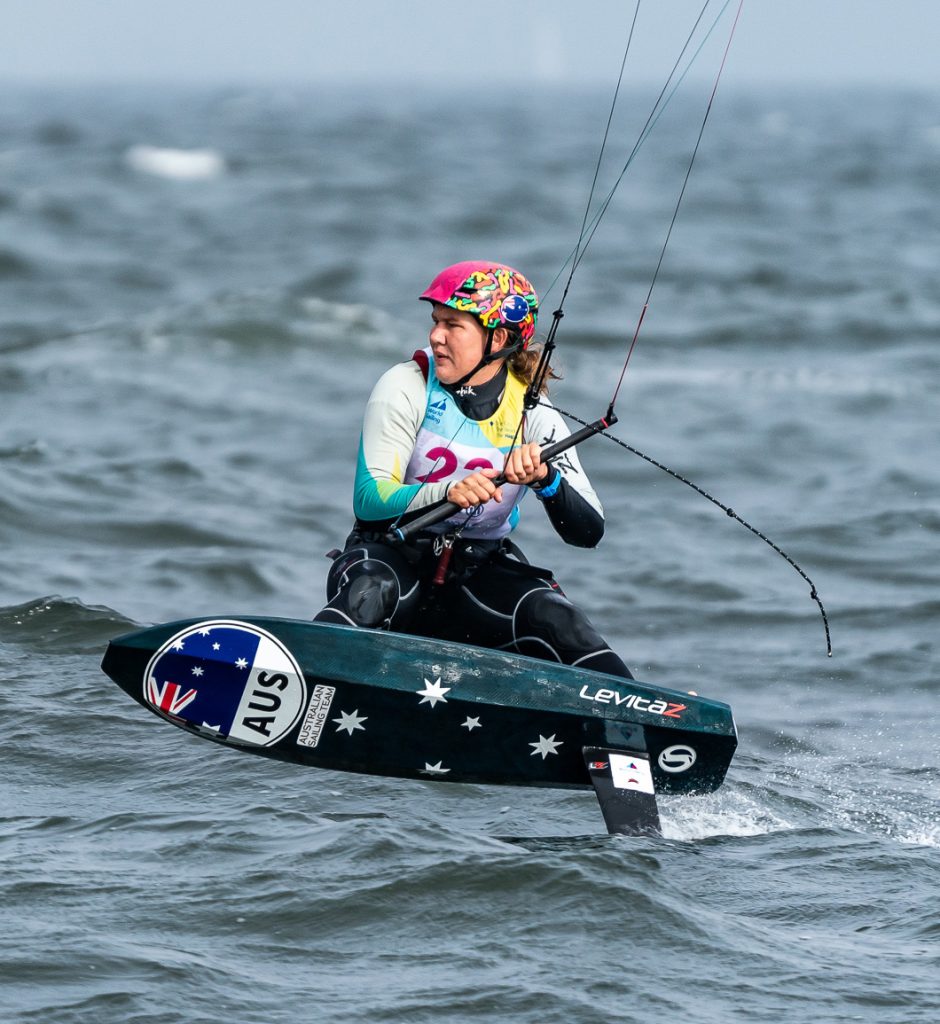
“In the beginning, it was basically ‘bring your own home-made gear, do whatever you like’,” Murray says. “It was virtually an arms race, and expensive. People were buying all the best gear, and it was all about who you knew or what you could build. Now it’s a more level playing field and while there’s no ‘one design’, you do have to register your designs.
Within the past seven or so years, kite-foiling has evolved under the direction of Markus Schneider, who has become an advocate for the sport, promoting its speed, skills and spectator appeal to the attention of the IOC to make a class now called Formula Kite.
The kite-foiling set-up is comprised of three main pieces of equipment: the mast, the foils (wings) and the board. “The slightest pinhole in the foil, a scratch or fingerprint with sunscreen will cause ventilation, where air bubbles are trapped on the surface of the foil, and this causes the foil to lose lift and become unsteady, and throw you off – this can be very dangerous,” Murray explains.
Built to Spec
“Only a limited number of people are able to make the foils in quantity to the specifications required by the International Kite-boarding Association (IKA) and adopted by World Sailing. Several companies registered, and then it came down to two companies: Austrian Levitaz and Italian Chubanga.”
A crucial part of the gear is the board, and that’s where ATL Composites became involved. From his many years in boat building, Murray knew of ATL Composites and was a seasoned user of the range of WEST SYSTEM Epoxy products.
“The board is a crucial element. Its shape is critical to getting up on the foil and interacting with the water through waves and maneuvers so as not to throw the rider off,” says Murray.
“We Experimented a Lot Over the Years.”
“We made boards freehand like surfboards, and we experimented a lot over the years. When you compete internationally, you need strong, light boards that don’t throw you off when you hit a wave, a fish or debris and they need to last, as you can’t just duck back to Australia and get another one.
“Some of the commercial boards were too weak. I have repaired a lot of boards for riders, and over that time, I’ve observed the failures and stress points with all the designs, so we set about to make a design that would last a whole European season. We devoted many hours of studying how they work, with both Breiana and Scott’s significant rider input and feedback… and hours of watching the board-water interaction from the tender.”
Down to the Core
Breiana’s boards are made entirely of carbon over a core of foam. This provides structural rigidity, prevents water absorption, allows shaping to a fine finish with crisp lines, provides a tuttle (socket to attach the foil to the board) that won’t crack, and foot straps that don’t pull out.
“There’s a lot involved,” Murray states. “Aside from the dimensions to create a volume that you need to get all this rigidity, the tuttle has to be made and inset with an extremely tight fit with the mast, exactly in the right location and at the right angle. That’s the trickiest part of the equation.
Partnering with the AIS
“Knowing that we would need more boards pre-Olympics, Australian Sailing engaged the Australian Institute of Sport (AIS) in Canberra with very accurate scanning equipment to create data files of our best and most recent board.
“Then we looked at what materials we could use. Divinycell foam core is a great product in boat building, but a little heavier than spray foam, which almost all commercial boards are made from. It provides better structural rigidity, doesn’t absorb water, and can adopt crisp complex shapes by hand or CNC, all a plus over styrene.
“We got in touch with ATL and they researched a foam grade that would suit. We provided the file, and ATL CNC-milled it to final finish.”
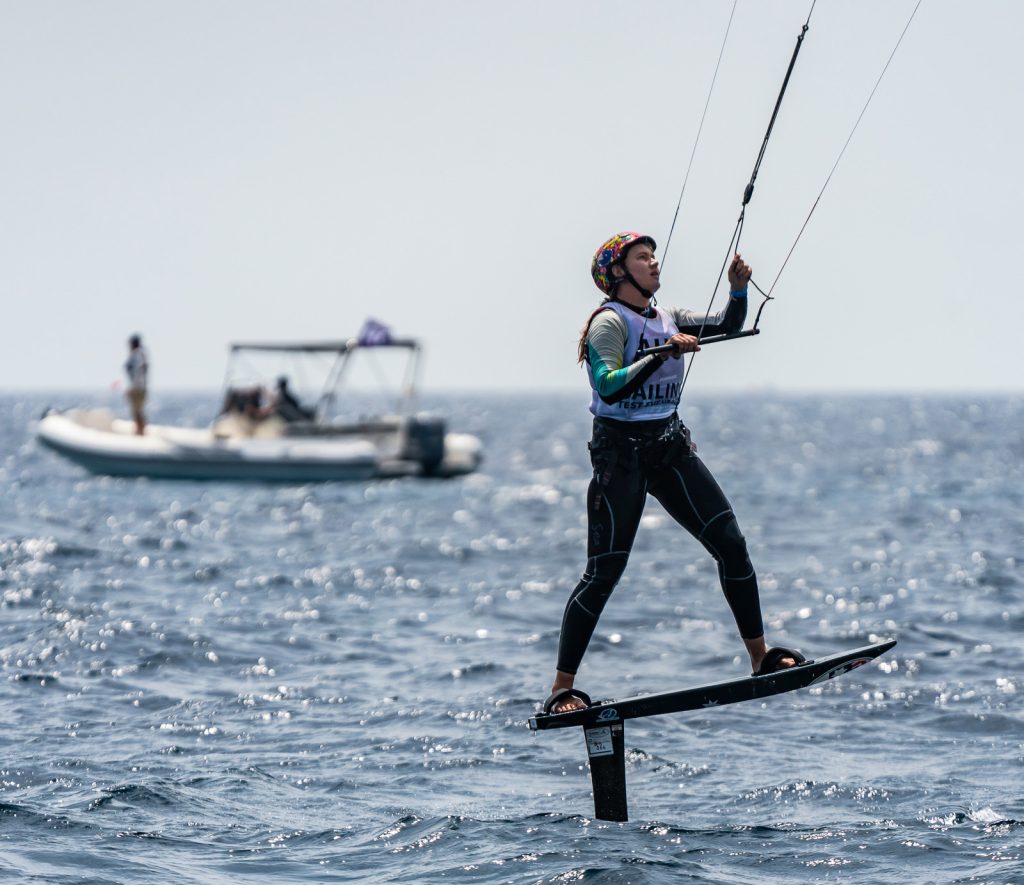
Fine-Tuning the Core Material with ATL Composites
Kai-Yih Lee from ATL Composites was part of the technical team who worked with Murray, Breiana and her coach, Shane Smith. “Considering their parameters, the lightweight Divinycell H45 foam core was chosen as the core material to allow for maximum weight saving, and WEST SYSTEM 105/206 as the laminating resin,” Kai-Yih explains. “Divinycell H is ideal for applications subject to fatigue, slamming or impact loads.”
“We knew that our 5-axis flatbed CNC machine wouldn’t be able to machine the board in one go as it requires the board to be flipped to machine both the top and bottom face. And with some brainstorming, Breiana suggested that we add some temporary supports to the model which will allow the board to sit flat and stable once flipped. These supports can then be removed after machining. Once machined, we sent the board to Murray for final finishing.”
Time-Saving Breakthroughs
Murray and Breiana were rapt with the results. “ATL Composites’ CNC milling took the time for making the core and shaping the board from a week down to three hours which is a huge saving,” says Murray. “No more gluing layers together to get rocker, measuring old boards to replicate, and the trial and error of freehand. We had an accurate base to start with and then fine-tuned it.
“I Always Have a WEST SYSTEM Epoxy Repair Kit on Me!”
“We used WEST SYSTEM Fillers to crisp up the lines [and] tinted the 410 Microlight® with WEST SYSTEM 502 Black Pigment to look the same as carbon. Then over the top, we sealed with WEST SYSTEM 207 Special Clear Hardener®. It’s so versatile. We don’t paint the boards. We get a pretty good finish with the clear coat over the faired laminating resin. High-level racing is a bit rough and tumble, so if damage occurs it’s a simple prep and epoxy repair. I always have a WEST SYSTEM Epoxy repair kit on me!”
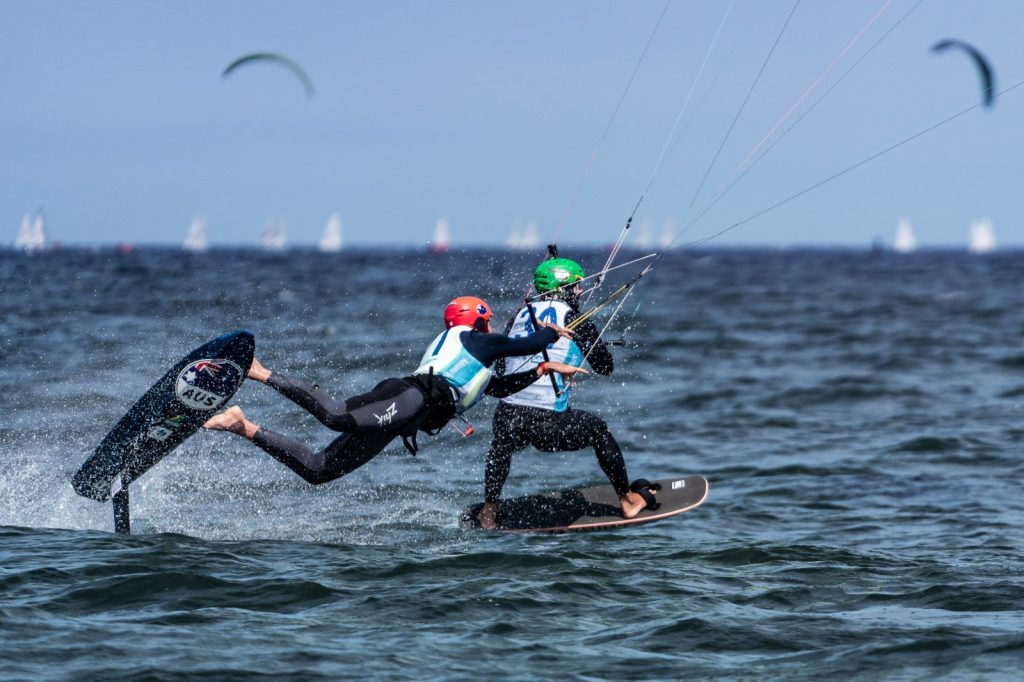
A Real Team Effort
Now, with the 2024 Paris Olympics in her sights, Breiana is training hard and refining her knowledge of board building. “She brings skills I don’t have—able to manipulate the CNC data files and a definite view of how to improve our design. I think it’s great that she wants to learn how to use every hand and machine tool so that she can repair her own boards. I’m fussy, but she is next level!” says Murray with pride. “She has an affinity for it,” he continues. “Her drive is to make the design better each time. Between the two of them [Breiana and Scott], it’s a complete circle – a real team effort.
Breiana comments, “I really like building the boards. I find it’s a really creative thing to make something really functional and pretty out of a block of foam and some sticky resin. I love the process of continual improvement and refinement of what we are doing.
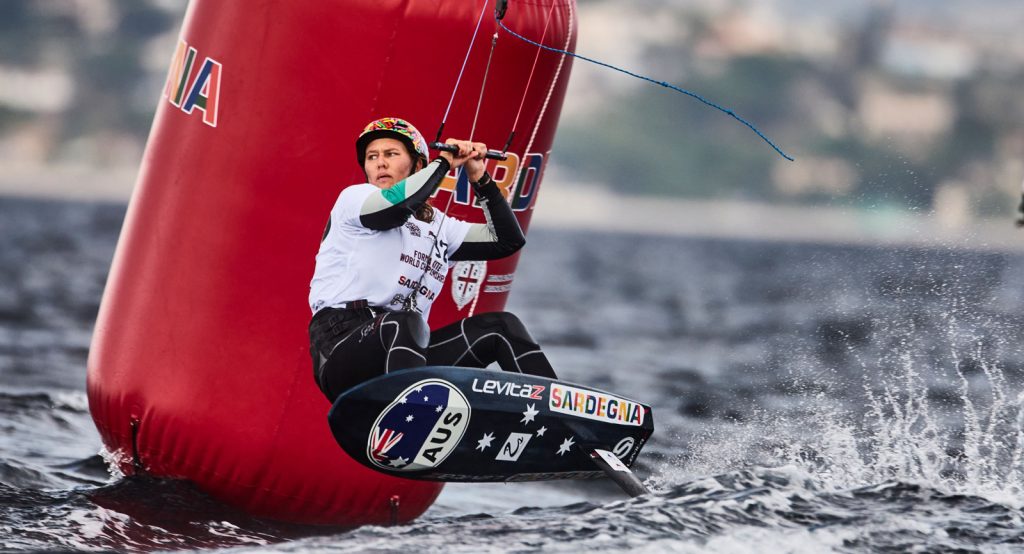
“I look forward to continuing working with ATL. It is great to be able to get expert advice on quality products and concepts to continue to develop the board I’m racing on. For me, it’s really important to have trust in all of the equipment. When I know the gear is reliable, I can push it to the limits. Being able to make a board I can trust, with reliable products, is key to me when I’m racing. I look forward to further refining the process in the future working with ATL.”
Learn more about Breiana Whitehead: click here.
Learn more about WEST SYSTEM Epoxy: click here.

